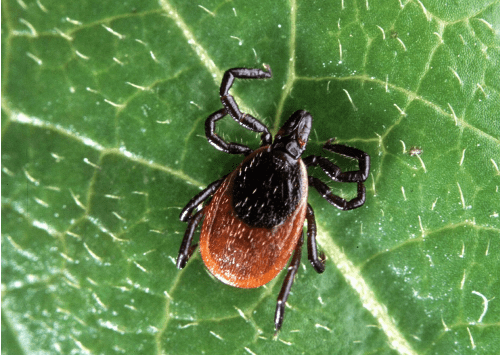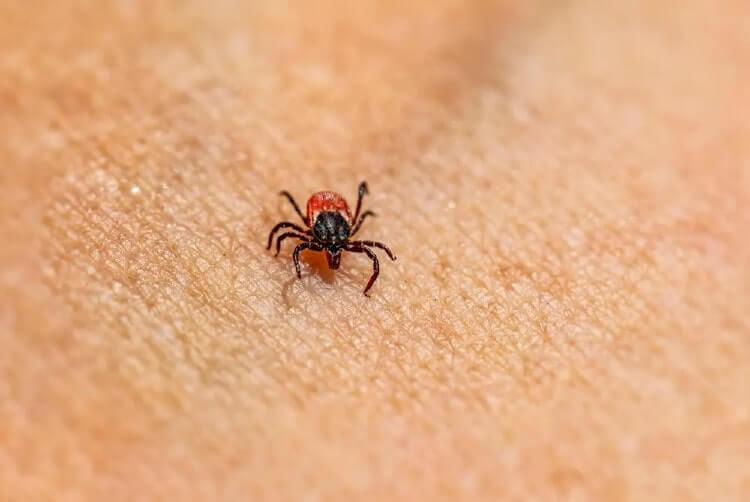By Michael F. Parry, MD, Chair of Infectious Diseases
Please note: Lyme disease, if undiagnosed or untreated, can become serious. If you think you may have any of the symptoms below, schedule an appointment with your primary care physician (PCP) right away.

As many of us know, Lyme disease is an infection passed to humans through the bite of an infected blacklegged tick, known as Ixodes. Many of us may not be aware, however, of the following:
1. The tick bite is painless and often goes unnoticed.
After the initial tick bite, the following may happen:
4-48 hours after the tick attaches and feeds on the human "host," the bacteria that causes Lyme disease enters the blood.
Symptoms begin 7-21 days after the bite, and typically include fever, headache, fatigue, and a distinct skin rash called erythema migraine or the infamous "bullseye."
Lyme disease needs to be treated!
If left untreated, the rash and fever will eventually go away, but infection can later spread to joints, the heart, and the nervous system. So it’s important to see your doctor for evaluation and possible treatment if you have these or any unexplained symptoms after a tick bite.
2. Lyme disease is diagnosed based on symptoms, physical findings (like a rash), and the possibility of being exposed to areas where ticks live.
A blood test may be helpful in diagnosing Lyme disease. Most cases of Lyme disease can be treated successfully with 2-4 weeks of antibiotics.
3. The chances that you might get Lyme disease from a single tick bite depend on the type of tick, where you were bitten, and how long it was attached to you.
Many types of ticks bite people in the U.S., but only blacklegged ticks transmit the bacteria that cause Lyme disease.
Furthermore, only blacklegged ticks in the areas of the northeastern and north central U.S. are commonly infected.
Even if a tick is infected, it may not transmit Lyme disease. The tick needs to be attached for at least 24 hours before transmission will occur. This is why it's so important to remove them right away and to check your body daily for ticks if you spend a lot of time outdoors and live in an area with a large tick population.
4. The ticks that transmit Lyme disease can occasionally transmit other infections as well.
Anaplasma (an infection of white blood cells) and Babesia (an infection of red blood cells) are two of these, commonly found in our area, but are seen less frequently than Lyme disease. Both these infections cause fever and fatigue like Lyme disease, but not rash or arthritis.
5. Reducing exposure to ticks is the best defense against Lyme disease and other tick-borne infections.
Prevent infections from tick bites by:
- Using insect repellent
- Removing ticks immediately with fine-tipped tweezers
- Applying pesticides to lawns and other high-risk areas
- Properly maintaining yard or land (e.g. trimming very tall grass)
- Walking in the center of hiking trails and wearing light-colored clothing to make it easier to find ticks on your body
Remember, always do a “tick check” and take a shower right after spending time in areas where ticks live.
While it is a good idea to take preventive measures against ticks year-round, be extra cautious in warmer months (April-September) when ticks are most active.
For current information about Lyme disease, visit the CDC website.
Featured Expert/ Author
























